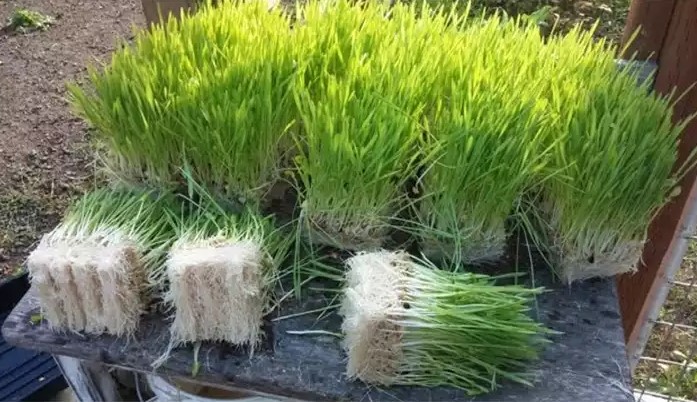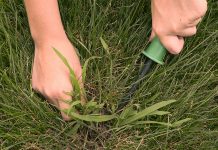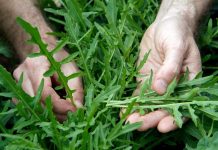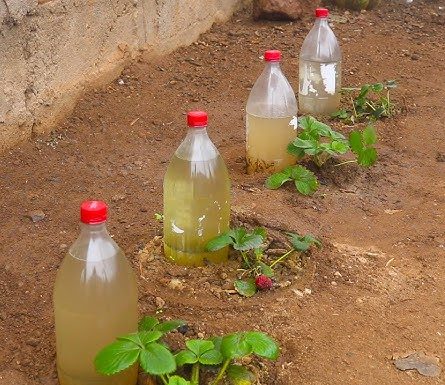Raising small animals on your homestead can be quite demanding. Not only does it take a toll on your wallet to provide them with proper food, but you also worry about their health.
Growing fodder is an excellent way to save money on feed costs and provide your animals with essential nutrients and fresh food, which becomes particularly vital during the winter months.
Fodder is an inexpensive and straightforward solution that grows remarkably fast – you can transform grains into lush grass in just one week!
Why should you consider growing fodder for your chickens and rabbits? There are numerous benefits to doing so:
- Save Money on Animal Feed: Everyone loves to save money! While many people embrace homesteading to reduce grocery expenses, the reality is that growing and raising your own food can sometimes be costly. Therefore, it’s essential to cut costs wherever possible. Growing fodder involves a small upfront investment, followed by inexpensive maintenance. While fodder won’t entirely replace your animals’ regular feed, it serves as an excellent supplement that helps fill their bellies affordably. Fodder can turn a small amount of grain into a substantial quantity of feed. For instance, one 50-pound bag of grain can yield over 200 pounds of fodder, quadrupling your animal feed with minimal effort.
- Year-Round Fresh Green Food: Winters can be tough for livestock. They spend days indoors, expending energy to stay warm and eating the same bland pellets repeatedly. However, you can change that by providing them with fodder! Fodder is packed with nutrients and tastes delicious to your critters. It’s a fantastic treat, especially on cold, frosty days.
- Nutrient-Rich Feed: Growing fodder not only saves money but also provides more nutritious food for your animals. Fodder is rich in protein and contains essential vitamins and minerals, contributing to your livestock’s overall health.
- Prevents Boredom: Boredom can be a significant issue with livestock, especially chickens. When animals get bored, they may resort to bullying and picking on each other, a problem that escalates during winter when they’re confined indoors. Feeding fodder once or twice daily keeps your animals engaged, preventing them from turning on each other.
Here are some essential things to know about growing fodder:
- Temperature: Fodder grows best in cooler temperatures, around 65 degrees Fahrenheit. Growing it in warmer conditions may lead to mold growth, while cooler temperatures could result in grains not germinating properly.
- Ventilation and Air Circulation: Adequate air circulation is crucial for successful fodder growth. Growing it outdoors is the ideal solution as it ensures constant fresh air. If indoor growth is your only option, ensure you have proper ventilation, like an open window or a fan.
- Supplement, Not a Complete Feed: Fodder can’t replace your animals’ complete feed as it lacks certain nutrients and roughage necessary for their well-being. However, it serves as an excellent supplement, particularly during winter when fresh greens are scarce.
Where to buy grains:
There are various options for purchasing grains, but it’s crucial to ensure they haven’t been chemically treated and are safe for animal consumption. Freshness is also vital to prevent mold growth.
- Farm Stores: Farm stores are the best places to buy grains for fodder. They offer cost-effective 50-pound bags of high-quality grains designed for animal feed.
- Online: If you don’t have access to a nearby farm store, you can order grains online. However, be cautious about packaging, as grains may not be packaged well and could spill during shipping.
Supplies Needed for Growing Fodder:
There are numerous ways to grow fodder, so it might take some experimenting to find the best system for you. Start small and expand as you become more comfortable with the process. Here’s what you’ll need to begin:
- A bag of grain (Barley or wheat work best, but you can experiment with other grains as well).
- Water (Tap water works perfectly fine).
- Shallow containers with drainage holes for growing the fodder. Consider using reusable food storage containers or seed-starting trays with holes for drainage.
- Bright light or grow lights for the fodder to thrive.
How to Grow Fodder, Step by Step:
Step 1: Rinse the grains:
Thoroughly rinse the grains to remove any mold spores, fungus, or insect eggs. Pour the grains into a colander and rinse them under running water for a few minutes.
Step 2: Soak the grains:
Place the rinsed grains in a large bowl, covering them with a few inches of clean, cool water. Let them soak overnight, and you can cover the bowl to prevent contamination.
Step 3: Prepare the containers:
Clean your chosen containers thoroughly with hot, soapy water before using them for fodder growth. Once clean, load them with the soaked grains.
Step 4: Add the grains:
Spread the grains evenly in the containers, creating a layer about half an inch deep.
Step 5: Water the grains:
Water the grains every morning and evening. Use a spray function on your faucet to evenly moisten the grains, allowing excess water to drain through the holes. Watering twice a day is ideal, but once a day can also work.
Step 6: Provide Bright Light:
Place the containers in an area with bright light, either near a window or using grow lights if needed. Protect them from curious animals, especially when growing outdoors.
Step 7: Feeding your animals:
After around seven days, your fodder should be fully grown and ready to feed to your animals. Remove the entire mat of fodder from the containers and cut it into pieces for feeding. It’s best to feed chickens small amounts of fodder multiple times a day to prevent overconsumption. Rabbits particularly enjoy eating the greens, while chickens will consume both the grains and roots.
Developing a rotating system:
To ensure a continuous supply of fresh fodder, consider implementing a rotating system. After feeding one container’s contents to your animals, clean and sanitize it, then follow the growing process again to produce more fodder.
Additional Tips:
- Store your grains in a dry, secure location to prevent mold and keep them safe from pests like mice, rats, and birds.
- If you notice mold or fungus growing in your fodder, discard it and start anew. Ensure containers are thoroughly cleaned, and fodder drains properly after each watering.
Growing fodder is a satisfying and low-effort process that offers substantial benefits to your livestock. It’s an excellent way to supplement their feed, especially during winter months, and keep them happy and healthy. Feel free to experiment with different grains and setups to find the best approach for your needs. This simple project offers plenty of flexibility and can contribute to a cost-effective and enjoyable homesteading experience.










